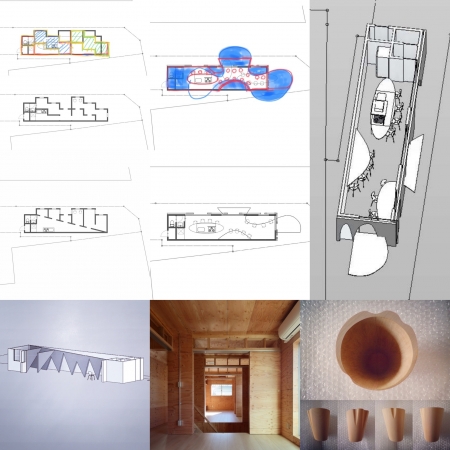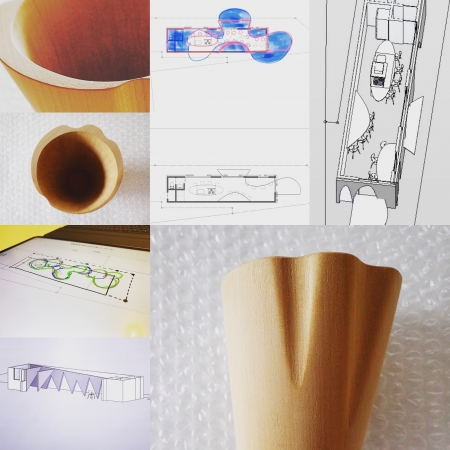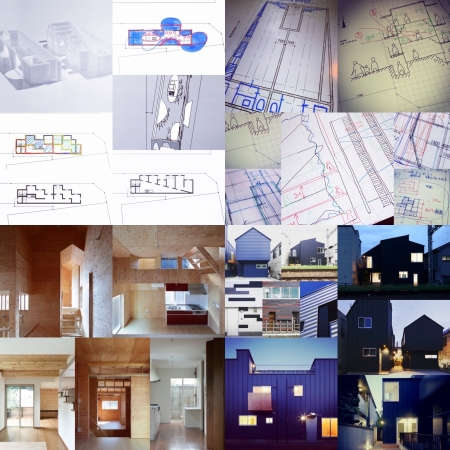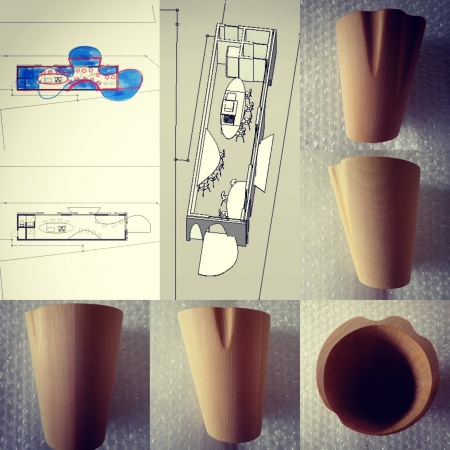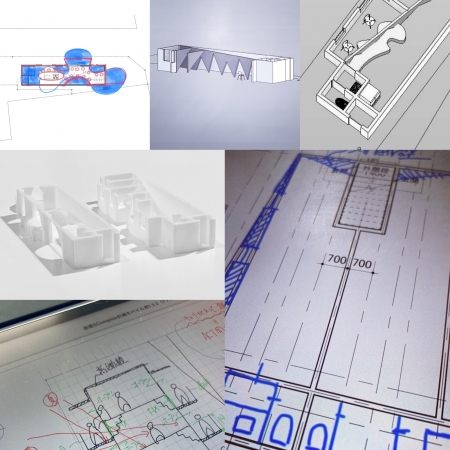建築で「気持ち」という言葉を変換する
様々な気持ちを抱く人が建築や空間とどのようにつながるのか、それをプランや形で表現する。その場合「気持ち」には直接的に形になる情報が無いが、形とはその生成過程での動的な瞬間を捉えたものとされるから、「気持ち」という言葉を動きのある言葉に置き換えてやることができれば、「気持ち」から形に結びつく情報を抽出できるかもしれない。
「気持ち」には様々な側面があるから、どこにフォーカスしてやるかによって、置き換えたり、関連させる動きのある言葉が違ってくるかもしれない。だから、それだけ「気持ち」をプランや形に結びつける自由度があり、可能性があるということもいえるだろう。
「気持ち」は人の主観であり、その人のその時における固有のものであるから、人はその「気持ち」を判断基準に使うことがあり、そうすると「気持ち」が判断した結果に現れる。このことを動きのある言葉に置き換えるならば、例えば「選択する」になるだろうか。
「選択する」という動きのある言葉から形やプランに結びつける。それは「気持ち」という言葉よりは結びつきそうな気がする。
"Transforming the word" feeling "in architecture"
Express in plans and forms how people with various feelings connect with architecture and space. In that case, "feeling" does not have information that can be directly formed, but since shape is considered to capture the dynamic moments in the process of its formation, the word "feeling" is changed to a moving word. If we can replace it, we may be able to extract information that leads to form from "feelings."
Since there are various aspects to "feeling", the words that move to replace or relate may differ depending on where you focus. Therefore, it can be said that there is a degree of freedom and possibility to connect "feelings" to plans and shapes.
Since "feeling" is a person's subjectivity and is unique to that person at that time, one may use that "feeling" as a criterion, and then the "feeling" appears in the judgment result. If we replace this with a moving word, would it be, for example, "choose"?
Connect the moving word "select" to the shape and plan. I feel that it is more connected than the word "feeling".

